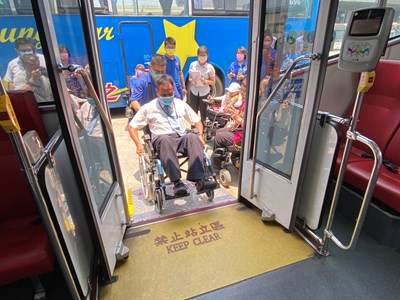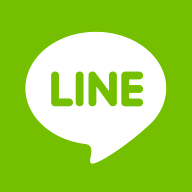
"Let me do what you say!" The Transportation Bureau recently held a symposium in the Taichung Bus HSR parking lot to exchange barrier-free bus services with disabled social welfare groups and 16 bus carriers to improve the problems of disabled people taking buses. And provide education and training on the practical operation of low-floor buses and the lifting equipment installation for passenger transportation. Representatives of the physically challenged enthusiastically raised their thoughts on taking the bus. Driving also shares the safety of the transportation environment, ensuring the smooth transport of passengers to their destination.
As stated by Director Chao-Fu Yeh of the Transportation Bureau, Taichung City currently has a total of 1,558 public buses. Among these, 1,291 low-floor vehicles are specifically designed for the convenience of the elderly and disabled, while 52 public buses are equipped with lifting equipment. This brings the overall accessibility rate of public buses to 86.2%. The Transportation Bureau requires bus carriers to implement services for the physically and mentally challenged and improve service standards so that passengers can obtain high-quality, professional, and friendly feelings by taking public buses to strengthen accessibility services. Wen-Zheng Chen, Deputy Director of the Public Transportation & Rapid Transit System Office, indicated that convenient public transportation is one of the indicators of urban progress. In response to the demand for elderly and disabled people to take public transport and by creatively designing clear and warm bus shelter service lights, the Office has replaced the wheelchair logo that has been in use for many years with a yellow smiling face bell. Starting from January last year, people highly praised the 136-seat service lights on the main corridors in the urban area. The bell-shaped service light will light up using the bus route button or keyboard to input the ride route, allowing bus drivers to grasp the waiting passengers in advance.
Deputy Director Chen also promoted at the meeting that the service light buttons at the bus shelter are in two forms: elevator type and telephone type, with "cancel" and "delete" function buttons. More than 900 bus shelters are in the city, with 236 smiling face bell service lights built last year. This year, they will expand to 120 to prevent passengers from missing the bus and reduce the risk of roadside blocking, which also urged that bus drivers not skip stops. "People with disabilities are very grateful for the driving service, "said Long-Bin Dong, director of the Taichung City Spinal Cord Injury Association. His friends with disabilities from other counties and cities who come to Taichung have felt the friendliness of driving by bus. And drivers have been proficient in getting on and off the low floor of the bus and locking the wheelchair. He mentioned once participating in a New Year's Eve event, and the buses were full at the end of the event. Finally, a driver opened the car door and lowered the ramp to let him get in and go home. After six years, he still remembers this enthusiastic driver.
Mouth and foot painter Shi-Huang Xu was a life warrior whose limbs were amputated for accidentally touching high-voltage electricity. He often takes the 199, 290, and other buses to market streets, such as Xiangshang, Nantun, Shuinan, etc., to sell for self-reliance. Taking the barrier-free bus is convenient for going out to do business. Many bus drivers are willing to serve him, although he has encountered some buses that refused him to board before. He hopes that the bus in Taichung will become a means of transportation for the physically challenged, with love and without obstacles. The service is in place, but the bus driver reminds the physically challenged that wheelchair users must cooperate with safety operations when taking the bus. After boarding the car, disabled people politely refuse to buckle the safety buckle because of the high cost of the wheelchair, which makes driving more troublesome under the premise of safety. Some people who drive non-medical assistive scooters with awnings do not allow taking buses according to regulations. Therefore, bus drivers appeal to the public for understanding and cooperation, emphasizing the need to avoid increasing risks during the journey.
During the symposium, participants reviewed the current "Taichung City Bus Driver Service Standard Operating Procedures for Visually Impaired Boarding and Alighting" to create an accessible bus environment for visually impaired individuals. The steps for wheelchair users to pay attention to when taking public buses are experienced on-site by the Public Transportation & Rapid Transit System Office and passenger drivers. It includes assisting with slope boards by bus drivers, and using lifting equipment is labor-saving and safe. Bus carriers will further reward service-disabled individuals with substantial rewards, driving the quality and willingness of driving services. It allows the physically challenged to no longer consider taking public transportation as a fear and enjoy reassuring public transportation services.

 Facebook
Facebook
 Twitter
Twitter
 LINE
LINE